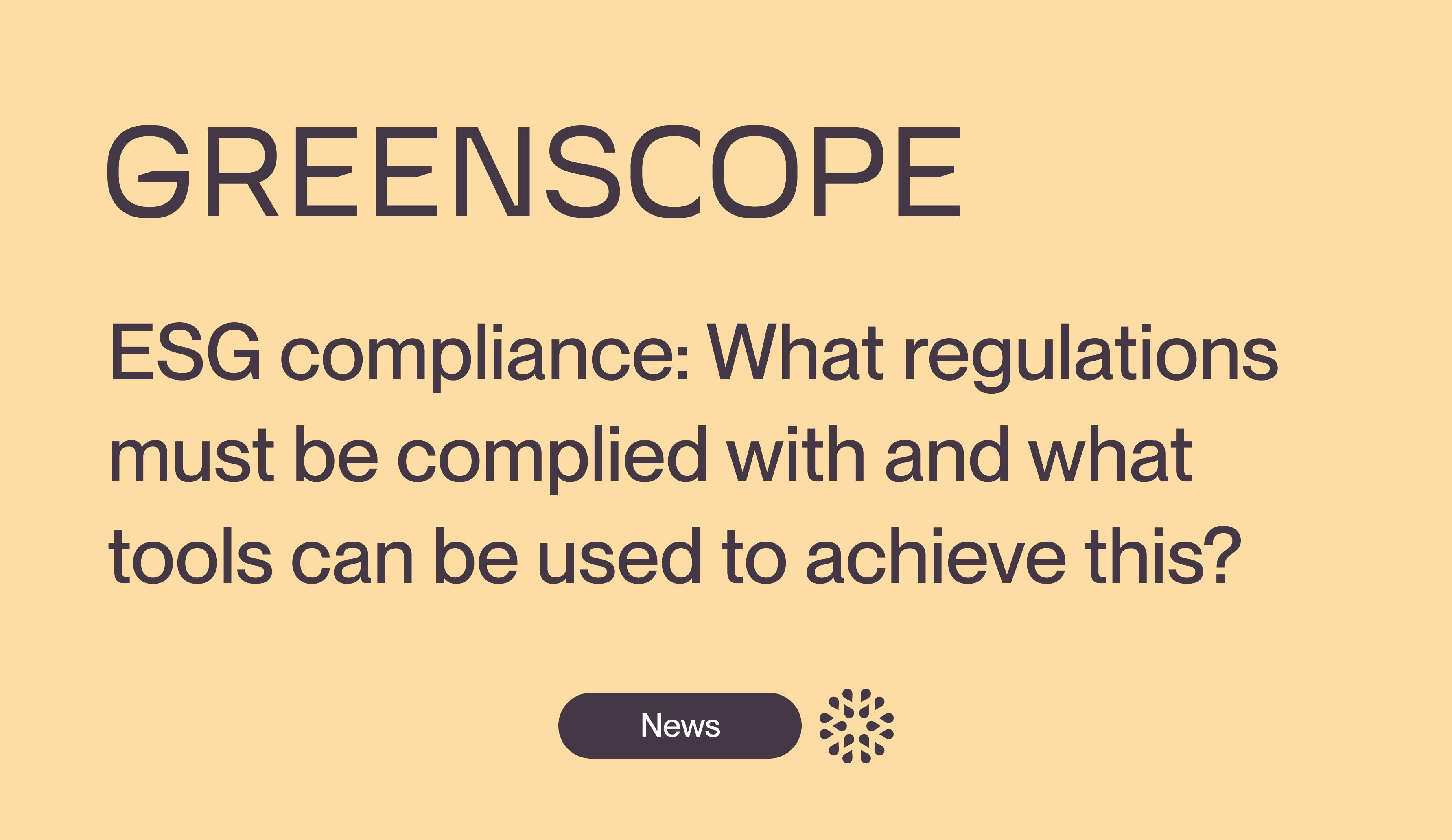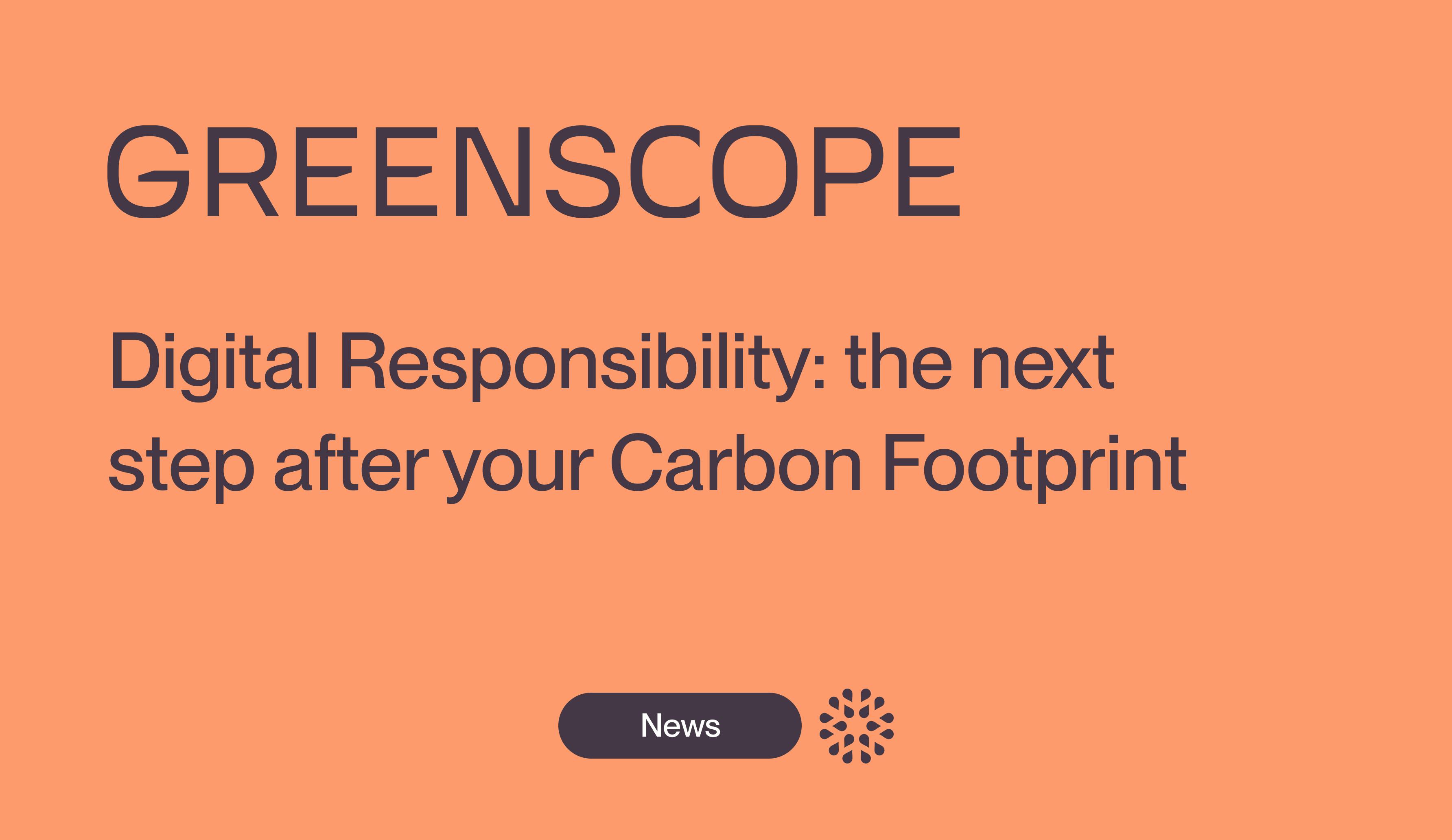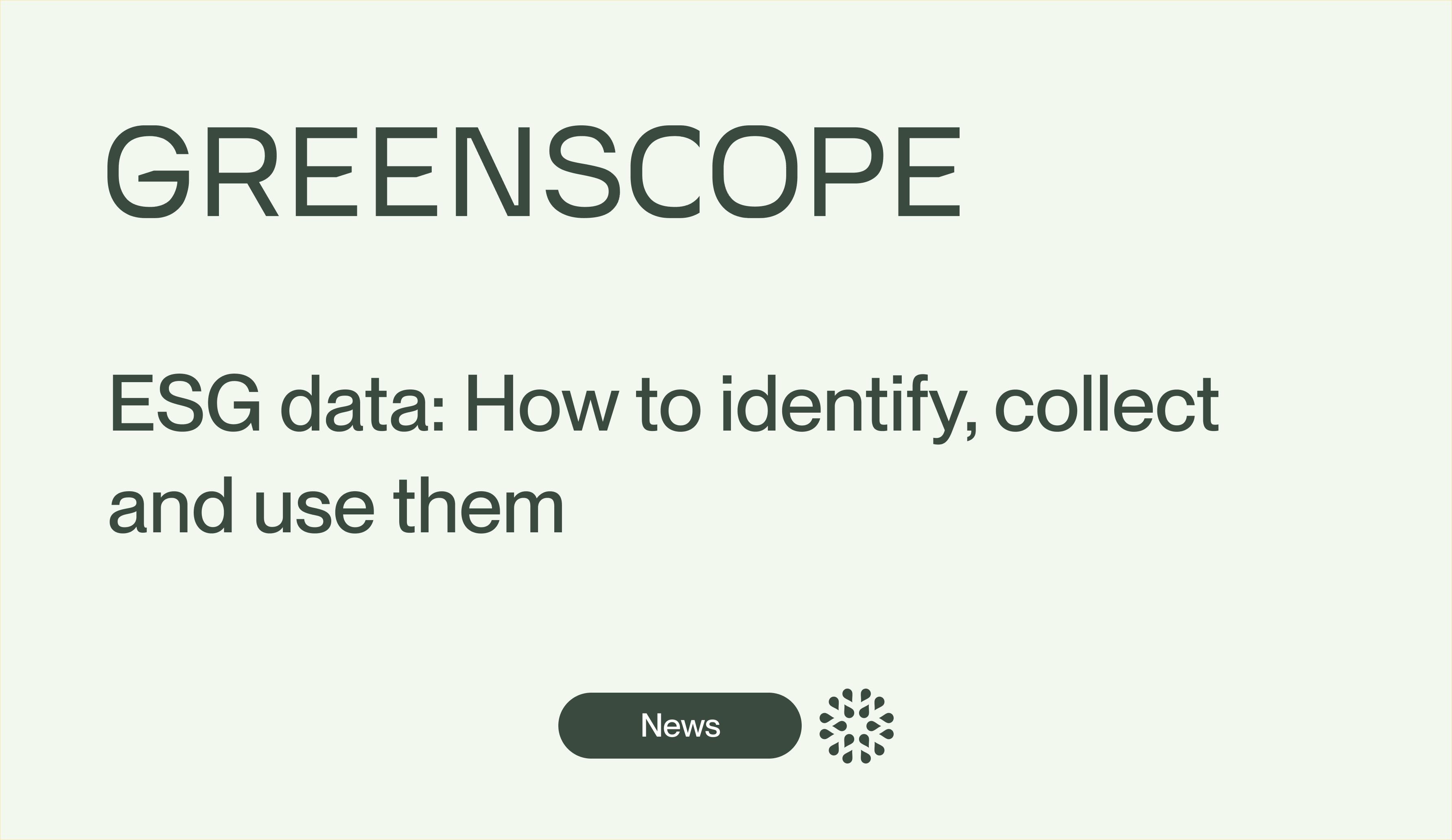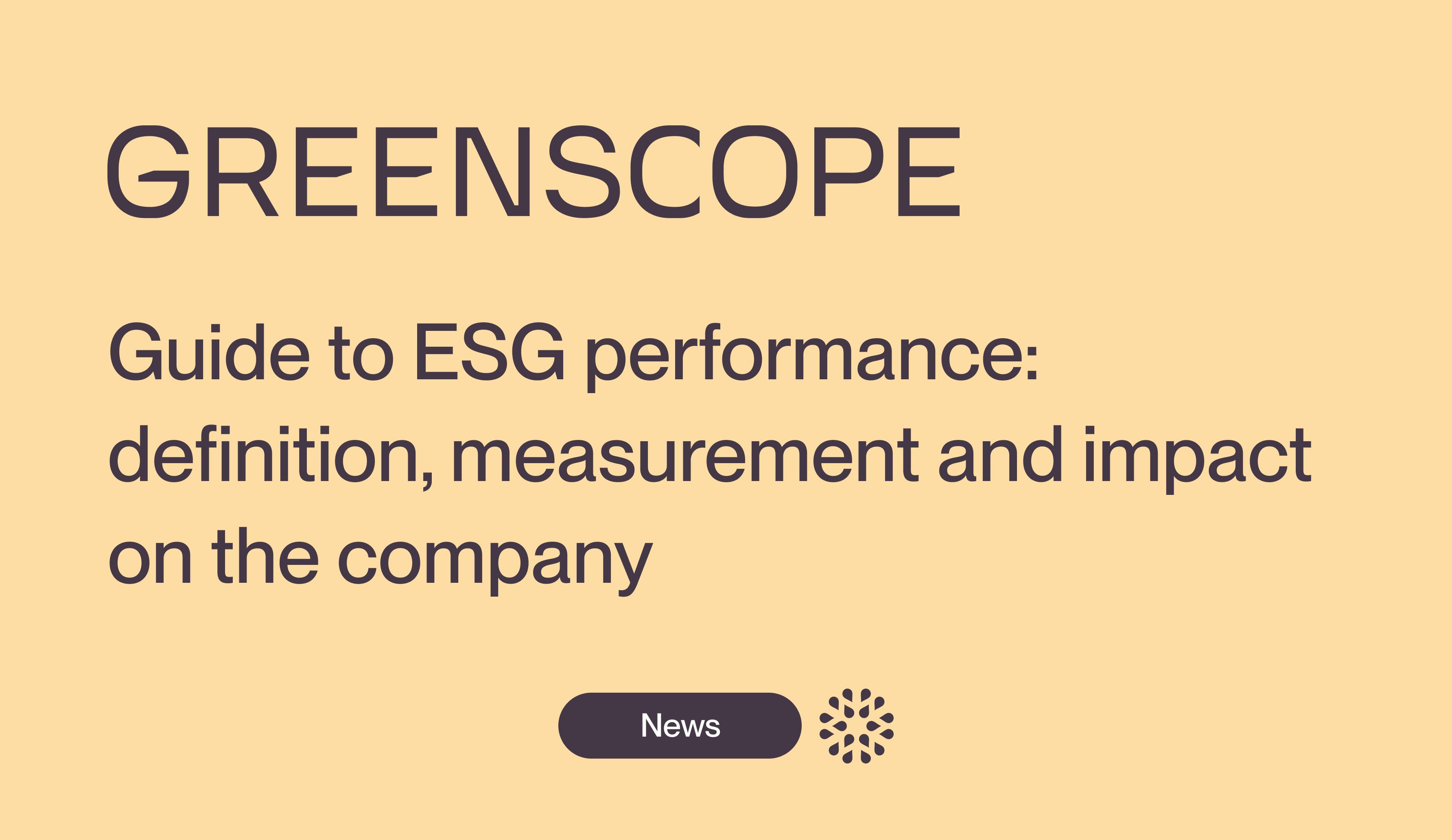ESG Compliance: What regulations to follow and tools to use to achieve it
Regulations, sanctions, tools, and examples: everything you need to understand ESG compliance challenges

In 2022, the U.S. Securities and Exchange Commission (SEC) imposed a $4 million fine on the investment bank Goldman Sachs. This penalty followed shortcomings in procedures related to investment products that were supposed to meet ESG criteria. This fine highlighted the growing importance of ESG compliance for companies across all sectors. Faced with increasing regulatory requirements such as the CSRD in Europe, organizations must adapt to ensure their transparency and sustainability. What are the main ESG regulations currently in force? What tools can ensure effective compliance? An analysis of challenges and solutions.
What is ESG compliance?
ESG compliance is the adherence to ESG regulations, standards, and commitments by companies and investors. These regulations define specific requirements that organizations must meet regarding environmental impact, social responsibility, and governance practices.
ESG criteria
These criteria represent the three pillars on which investors base their investment choices.
- The environmental criterion considers actions taken for waste management, greenhouse gas reduction, or biodiversity conservation.
- The social criterion evaluates the respect for labor rights, professional training, inclusivity, and thus measures the impact of an organization's activity on its stakeholders (employees, partners, and local communities).
- The governance criterion is based on the analysis of decision-making processes within the organization. It considers efforts to combat corruption, transparency on executive remuneration, etc.
For more information on ESG criteria and how to comply, check out our dedicated article.
Who is concerned and how?
The actors concerned by ESG compliance are increasingly numerous. ESG compliance no longer involves only financial institutions and investors but also governments, large companies, and SMEs.
The objectives of ESG compliance are varied and change according to the sectors they relate to. This involves both ensuring companies' transparency in their operations, reducing ESG risks, and promoting sustainable practices within them.
It should also be noted that in the event of non-compliance with these ESG regulations, sanctions may be incurred by organizations. Indeed, this may result in financial losses or severely damage the company's reputation. But it can go further with fines or legal sanctions.
For example, although the CSRD does not specify sanctions for non-compliance with its provisions, Forbes indicates that France is considering imposing severe penalties for non-compliance, which could go as far as exclusion from public contracts.
Regulations and European standards for ESG compliance
In recent years, several European regulations have emerged to frame the transition to a more sustainable economic model, reflecting the importance of ESG standards and thus the growing need for compliance for businesses on the continent.
- The CSRD: Replacing the Non-Financial Reporting Directive (NFRD) in 2022, it aims to improve transparency and comparability of companies' ESG performance within the European Union. With an expanded scope - affecting 50,000 companies in Europe - it would require companies to provide detailed reporting. Organizations must publish information on their environmental, social, and governance (ESG) impacts. This reporting must align with ESRS standards and the data must be audited by an independent third-party body. Moreover, compliance with the CSRD is only possible after an analysis of double materiality: companies must evaluate both how ESG factors affect their business (financial risk) and how they impact the environment and society (societal impact)
- The Sustainable Finance Disclosure Regulation (SFDR) adopted in 2021 requires financial actors to disclose how they integrate environmental, social, and governance (ESG) criteria into their investment decisions. It requires the classification of financial products according to their impact on the environment (Article 6, 8, or 9). Compliance is achieved through the publication of ESG indicators and the management of sustainability risks
- The European Taxonomy: a reference framework adopted by the EU to identify genuinely sustainable economic activities. It aims to direct investments towards activities contributing to the EU's climate and environmental objectives. The Taxonomy applies to companies and investors and contains strict technical criteria to combat greenwashing
- The CSDDD (Corporate Sustainability Due Diligence Directive – European Duty of Vigilance), inspired by the French Duty of Vigilance, would apply to companies with more than 1000 employees and €450M turnover progressively from 2027 to 2029. It imposes on large companies to prevent and remedy negative impacts on the environment and human rights in their value chains
There are also international standards that apply to French and European companies. Among these are:
- IFRS S1 and S2 (International Financial Reporting Standards – ISSB): standards published by the ISSB (International Sustainability Standards Board) in 2023, which aim to harmonize ESG reporting on a global level. IFRS S1 covers ESG risks and opportunities, IFRS S2 is more focused on climate
- GRI (Global Reporting Initiative) which is an international standard for non-financial reporting widely used in Europe
- SASB (Sustainability Accounting Standards Board): An industry-specific ESG reporting framework often used by investors
- UN principles such as UNGP (a global framework on human rights and business), PRI (a framework for responsible investors), or the UN Global Compact.
Many European and French companies use these compliance frameworks in addition to the ESRS from the CSRD, for example.
Examples of ESG-compliant companies
There are several ways to ensure that a company is ESG-compliant. For example, a 2023 report from the Forum for Responsible Investment ranks CAC40 companies according to their responses to ESG questions in AGMs, with Michelin and Véolia leading.
One can also look at compliance with European and international regulations discussed in the previous paragraph. In this context, several companies stand out for their exemplary compliance with ESG regulations, proactively integrating environmental, social, and governance criteria into their operations.
- This is the case for Schneider Electric, a French multinational specialist and world leader in digital energy solutions and automation for energy efficiency and sustainability. It is recognized for its commitment to sustainable development and was ranked 1st in the Times' 2024 World’s most sustainable companies ranking. In addition to its sustainability report, it annually publishes its ESG data and its SASB, TCFD, GRI, and WEF reports. These reports cover aspects such as carbon emission reduction, energy efficiency, and social initiatives. Schneider Electric has also adopted the European Taxonomy criteria, classifying its sustainable economic activities to guide responsible investments. Since its core business is energy management, more than 70% of its revenue is considered green according to the taxonomy criteria. But social issues are also taken into account, and the ESG performance is integrated into the executive compensation of the group. Its proactive commitment to these regulations underscores its leadership position in sustainability
- Another notable company is Unilever, which recently opposed the challenge to the CSRD and CSDDD with the Omnibus Law in January 2025 (source). Unilever is a British-Dutch multinational company involved in food and hygiene. The company also publishes its reports according to WEF IBC (World Economic Forum and the International Business Council), GRI, SASB and the UN Global Compact. Unilever has implemented rigorous policies to ensure a responsible supply chain aligned with the goals of the Corporate Sustainability Due Diligence Directive (CSDDD). These initiatives include measures to prevent human rights violations and minimize environmental impact throughout the value chain. Additionally, it achieves a score of 89/100 according to S&P Global Ratings
- Finally, Microsoft is a company recognized for its strong ESG performance. Indeed, in addition to sustainability reports, Microsoft publishes reports compliant with TCFD, CDP, and ISO 50001 standards, with a particular focus on responsible sourcing. The company is committed to transparency in both the processes and data it handles. Ultimately, this American technology multinational has numerous ambitious climate goals: to be carbon neutral by 2030 and 'water positive'—meaning to replenish more water than the company consumes in its direct operations.
However, it is worth mentioning that even these companies, which appear to be good ESG students, still have a long way to go. Microsoft and Unilever face controversies related to issues on their value chains and their still significant environmental footprint.
What are the challenges and benefits of ESG compliance for companies?
Compliance with ESG criteria has become a crucial point for companies as they must meet the growing expectations of investors, employees, consumers, and regulators.
- Investor preference: in 2022, in the United States, assets managed according to ESG principles represented $8.4 trillion, accounting for 13% of total assets under professional management (source)
- Employee and consumer expectations: internal and external stakeholders value corporate ESG commitments. For example, 80% of consumers and 84% of employees are more likely to buy from or work for companies that share their environmental values (source)
- Access new markets: Investors and business partners favor responsible companies, opening increased business opportunities
- Reduce legal risks: Compliance with ESG regulations minimizes the risk of previously seen sanctions and litigation
- Improving Reputation: A positive image in terms of sustainability and ethics strengthens the trust of consumers and partners. This positive image can also be created through labels
Tools and technologies for ESG compliance
To meet ESG compliance, there are solutions available to help companies in this exercise.
First, the solution of ESG reporting software. These are tools that allow monitoring the ESG performance of companies as well as the various obligations related to these issues. However, not all software is created equal, and we have written an article on this subject to guide you on the best software to use according to your ESG needs
These software programs can also sometimes offer automated reporting solutions. These technological solutions facilitate the collection and analysis of ESG data in order to create a complete ESG report that meets the compliance requirements of various standards. To learn more about the different types of ESG reporting, their content, and the data to be filled in, feel free to read our dedicated article
Finally, ESG compliance must be verified by an audit, most often external. This control process by third-party organizations to validate compliance is, for example, mandatory under the CSRD. The audits and their processes, whether internal or external are explained in our article on this topic.
Ensure your company's ESG compliance now! Discover our guides and tools to accompany you in this transition. Check out our dedicated article or contact our experts for personalized support
Our latest articles

Responsible Digital: the next step after your Carbon Footprint assessment
Understand the importance of implementing a responsible digital approach after completing your carbon footprint assessment

CSR News - April 2025
Discover the key developments: ongoing projects, standards updates, new official documents.

ESG Data: How to identify, collect, and use them
Learn how to structure your ESG data to better drive your commitments and enhance your sustainable performance

Guide on ESG performance: definition, measurement, and impact on business
ESG performance, a driving force for responsible growth: follow our guide to understand everything in just a few minutes



